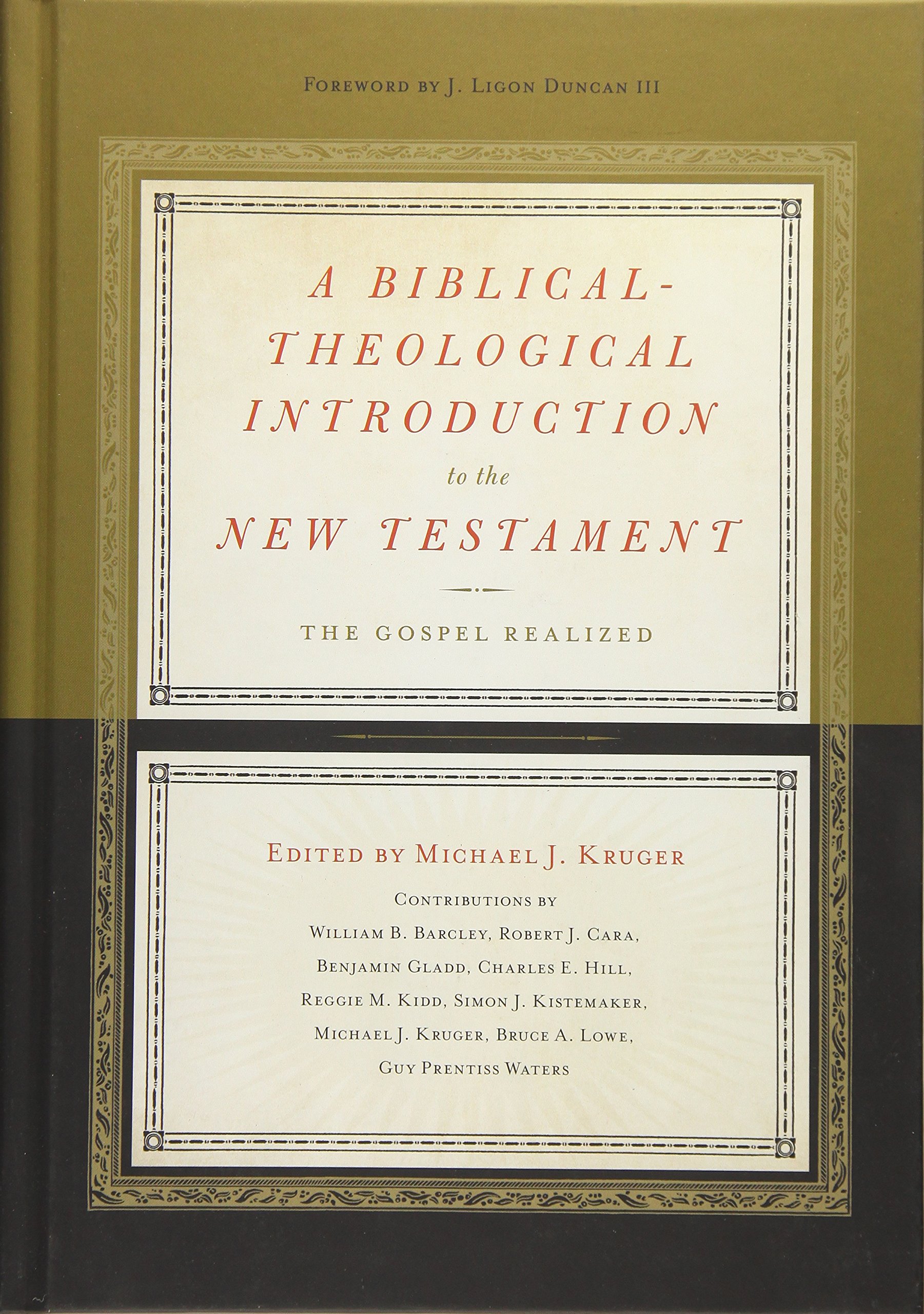A Brief Book Summary from Books At a Glance
by Mark Baker
About the Editor
Michael J. Kruger (PhD, University of Edinburgh) is president and Samuel C. Patterson Professor of New Testament at Reformed Theological Seminary in Charlotte, North Carolina. He has authored many articles and books including Canon Revisited (back cover).
Overview
The basic task of this book is to introduce the reader to the major issues of each New Testament book. There are six distinctives for this particular volume: (1) it is accessible enough for Bible study leaders and educated laypeople; (2) it comes from a biblical-theological perspective, taking the Bible as its starting point and treating the Bible as a unified whole; (3) it is redemptive-historical, placing the message of each book within the context of God’s unfolding plan of redemption; (4) it is Reformed, celebrating the five solas of the Reformation as they are found in the biblical text; (5) it is multi-authored with contributions by almost every New Testament professor in the history of Reformed Theological Seminary; (6) it is pastoral, providing accessible on-ramps for personal and congregational application.
Table of Contents
1 Matthew (Reggie Kidd)
2 Mark (Benjamin Gladd)
3 Luke (Robert J. Cara)
4 John (Michael J. Kruger)
5 Acts (Robert J. Cara)
6 Romans (Guy Prentiss Waters)
7 1–2 Corinthians (Guy Prentiss Waters)
8 Galatians (Guy Prentiss Waters)
9 Ephesians (Guy Prentiss Waters)
10 Philippians (Bruce A. Lowe)
11 Colossians (Benjamin Gladd)
12 1 Thessalonians (Robert J. Cara)
13 2 Thessalonians (Robert J. Cara)
14 Introduction to the Pastoral Epistles (William B. Barcley)
15 1 Timothy (William B. Barcley)
16 2 Timothy (William B. Barcley)
17 Titus (William B. Barcley)
18 Philemon (Benjamin Gladd)
19 Hebrews (Simon J. Kistemaker)
20 James (Bruce A. Lowe)
21 1 Peter (William B. Barcley)
22 2 Peter (Simon J. Kistemaker)
23 1–3 John (Charles E. Hill)
24 Jude (Simon J. Kistemaker)
25 Revelation (Charles E. Hill)
Summary
Chapter 1: Matthew
Reggie Kidd
Early church tradition is right: The apostle Matthew wrote the gospel that is attributed to his name, and it was composed before A.D. 70. The gospel was probably written to a Greek-speaking Jewish Christian community (31). Matthew’s purpose in writing is three-fold: (1) to demonstrate that Jesus’ kingdom has already been inaugurated but has not yet been consummated; (2) to show that Jesus offers forgiveness and renewal that enables God-followers to keep the true intent of the Torah; (3) to explain that Jesus’ presence forms a new community called the church that is composed of both Jew and Gentile. Matthew’s gospel is made up of five large series, each containing a narrative, a discourse, and a bridge to the next series. The birth and infancy narratives stand as an introduction, and Christ’s crucifixion and resurrection serve as the conclusion. Throughout the gospel, Matthew labors to show the preeminence of Jesus: he is the true and better Jonah, the true and better Solomon, the true and better temple. Additionally, “nowhere else in the New Testament is there such an unabashed affirmation of the need for the both-and of faith and works as in Matthew’s gospel” (47). Finally, Matthew’s gospel is the only one that mentions the word “church,” highlighting the new covenant community centered on Christ. . . .
[To continue reading this summary, please see below....]The remainder of this article is premium content. Become a member to continue reading.
Already have an account? Sign In
